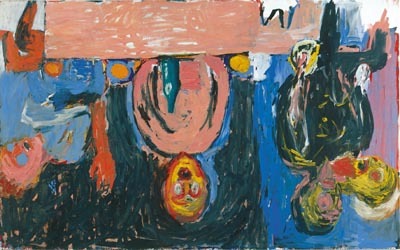Born Georg Kern in 1938, Baselitz adopted the name of his birthplace in Saxony, East Germany just after his definitive move to the West in 1958. Brought up in an atmosphere of gloom and social realism, he had been expelled from art school in East Berlin for ‘social-political immaturity’. He fared better in West Berlin and firmly grasped the fashionable nettle of existential angst while struggling with a whole raft of Western influences, from Abstract Expressionism to Pop Art.

Disagree with half of it, enjoy reading all of it
TRY 3 MONTHS FOR $5
Our magazine articles are for subscribers only. Start your 3-month trial today for just $5 and subscribe to more than one view
Already a subscriber? Log in






Comments
Join the debate for just £1 a month
Be part of the conversation with other Spectator readers by getting your first three months for £3.
UNLOCK ACCESS Just £1 a monthAlready a subscriber? Log in